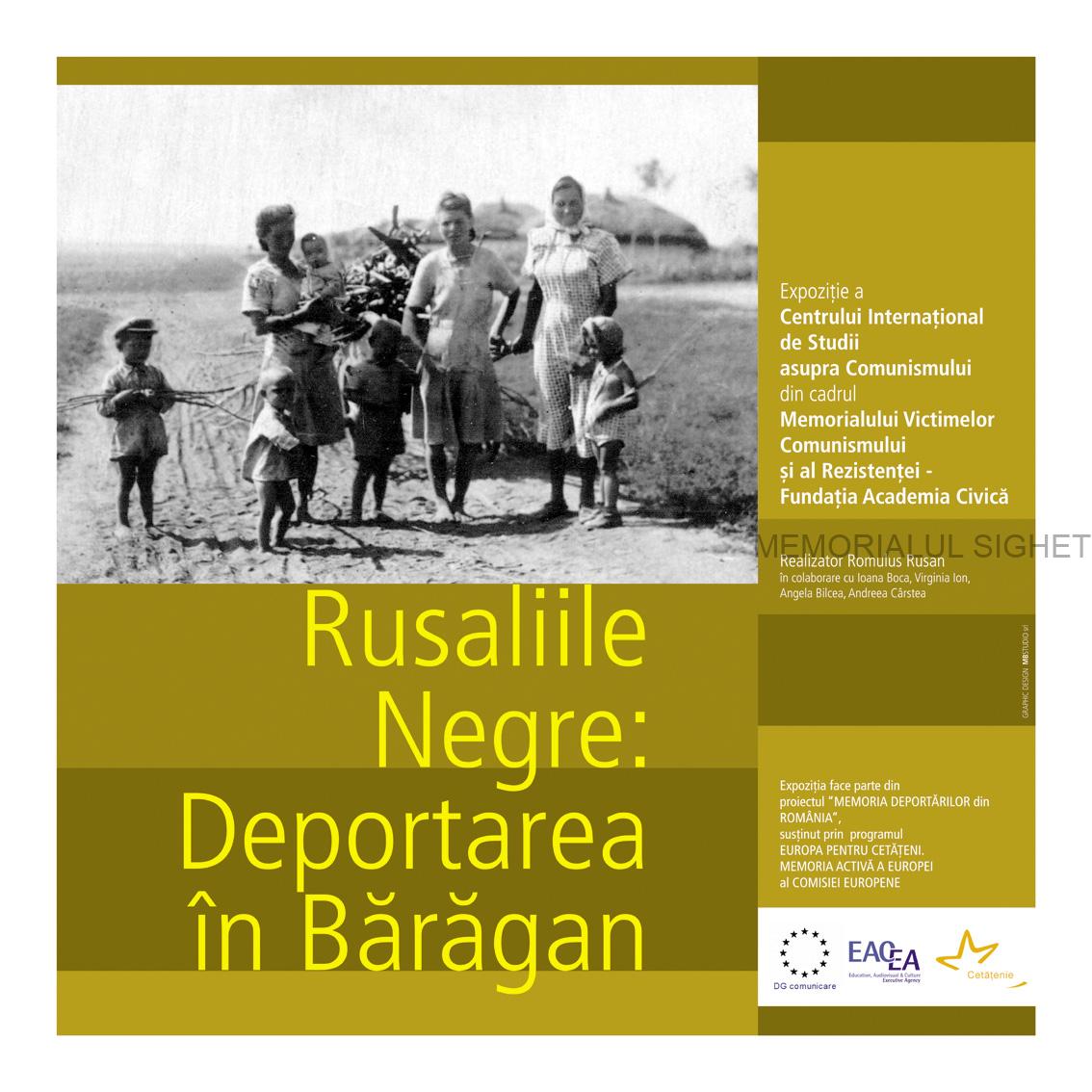
The deportations from the Banat and Mehedinţi in the summer of 1951 were one of the most bestial of all the numerous social purification projects invented by the communist regime during the Gheorghiu-Dej period, at the height of Soviet domination. As a result of a plan prepared with diabolical precision for three months, more than 44,000 people were taken from their homes without prior warning during the night of 18-19 June 1951, beginning with women and men of working age and continuing with their families, including elderly people of up to the age of eighty-five and children of all ages, in one case a baby just two days old. After a drawn-out journey of two days, locked inside cattle trucks, the deportees were deposited in a number of train stations in the Bărăgan Steppe, whence they were transported by truck to eighteen different points in the desert. Abandoned under the open sky, in the blazing summer sun, at first they were forced to build themselves rudimentary shelters beneath the ground. In the years that followed they built themselves houses and turned up the virgin soil. In this way they managed to provide food for themselves and their domestic animals, overcoming poverty and isolation, surviving like twentieth-century Robinson Crusoes.
The question put by the exhibition “Black Whitsuntide: The Bărăgan Deportation” is as follows: what was the purpose of uprooting so many people? Was the communist regime afraid of their industriousness, their serious-mindedness, their anti-communism, their hope that the Americans would come to liberate them, entering Romania through Tito’s Yugoslavia? Otherwise, there is no explanation for the huge forces brought into play: more than ten thousand armed men (Securitate officers, militiamen, pupils at military school, border guards, and firemen), co-ordinated and supervised by two thousand five hundred Party activists.
Five years later, in 1956, the deportees returned to their homes, but many found them occupied by the regime’s profiteers and for a second time they were forced to rebuild their lives from scratch. One thousand six hundred of them, including one hundred and seventy-five children, had died on the steppe and their bones were soon to be ploughed under, together with the villages they had built.
Some of the villages were preserved and converted into centres for “obligatory domicile” for the thousands of political detainees released from the prisons at the end of their sentences, but regarded as recalcitrant and impossible to “re-educate”. Their supplementary sentences, ranging from twelve to sixty months, and cohabitation within a narrow perimeter allowed them to forge friendships and transform their new existence into a school of solidarity. Up until the general amnesty that the communist regime decreed in 1963-64, thousands of detainees, and also their families, were sent to Bărăgan for obligatory domicile (O.D.). One of the most inhuman cases of such detention in this period was that of seven children, aged between one and twelve, expelled from Lăteşti with their mother, after their father, a Reformed priest, had been sentenced to twenty-two years imprisonment. Absconding from obligatory domicile was punished drastically. For example, an Orthodox priest was sentenced to life with hard labour for a short absence from the O.D. where he had been brought after nine years imprisonment.
In summary, the attempt to unravel the civic fabric succeeded neither in the case of the deportees nor in that of the O.D. detainees, and the communists had to delay the complete atomisation of society until the 1970s and 80s, when new generations yielded to the preventative terror unleashed by the communist regime in its new phase.
The “Black Whitsuntide: The Bărăgan Deportations” exhibition consists of twenty-eight panels, which provide a chronological and thematic exposition of the international situation in the 1950s (when Tito broke away from the Stalinist Cominform); the elaboration of the “dislocation” plan; the drawing up of the blacklists; the preparation and execution of the deportation; life in Bărăgan; the building of homes; the procurement of food and water; school; work; burials; and, finally, “Obligatory Domicile”. The explanatory texts are accompanied by hundreds of photographs, maps and objects, all of which are from the database of the International Centre for Studies of Communism. The eyewitness accounts are transcripts of recordings made by I.C.S.C. collaborators. At the opening of the exhibition, an audiobook with excerpts from these recordings will be launched.
The International Centre for Studies of Communism (Director: Romulus Rusan) has operated continuously for eighteen years and is the oldest component of the Civic Academy Foundation and, implicitly, the Sighet Memorial. The Centre’s Archive, consisting of six thousand hours of oral history recordings, almost one hundred thousand political prisoner records, ten thousand certificates of death in detention, thousands of photographs and hundreds of documentary films, is the creative laboratory of the Sighet Memorial and has published books amounting in total to more than thirty thousand pages. On the Centre’s Academic Board sit a number of leading experts in applied history, including Romanian Academy members Şerban Papacostea and Alexandru Zub, researchers Stéphane Courtois, Thomas Blanton, Dennis Deletant and Helmut Muller-Enbergs, former dissident Vladimir Bukovski, and sociologist Pierre Hassner. I.C.S.C. has a very small staff, and the exhibition was created by only five people, over the course of two months.
The exhibition showing at the Dimitrie Gusti National Museum of the Village is part of the “Remembrance of the Romanian Deportations” project, supported by the “Europe for Citizens: Active European Remembrance” programme of the European Commission.




